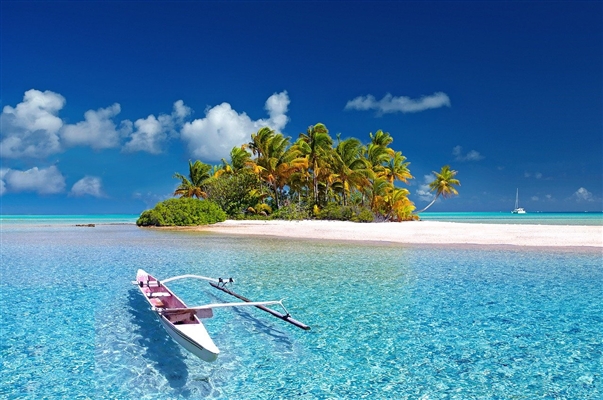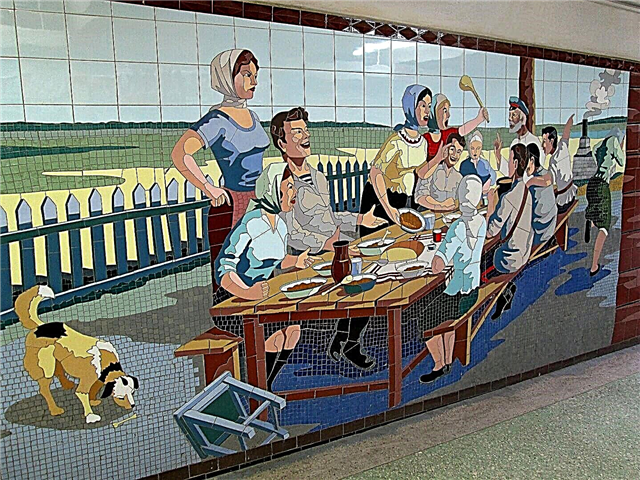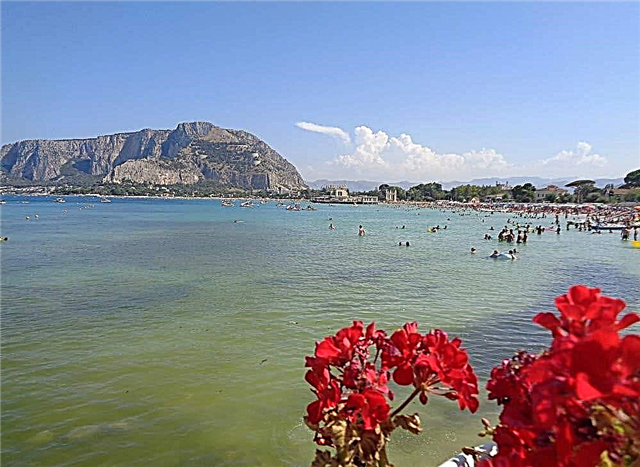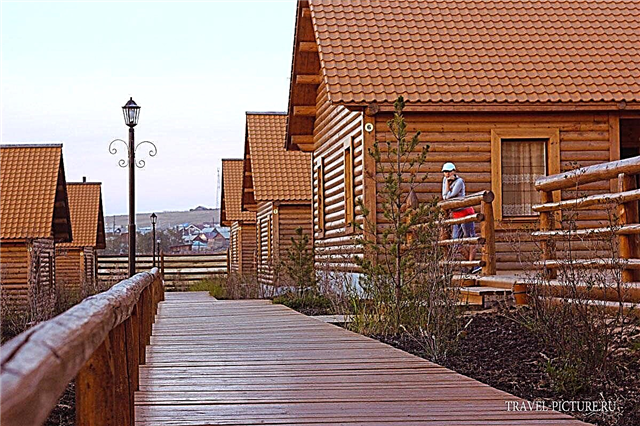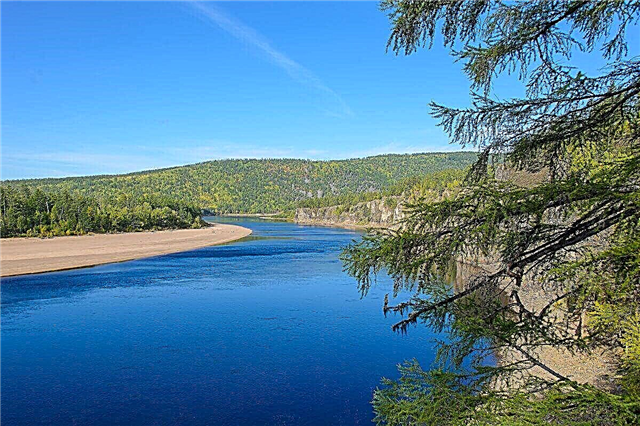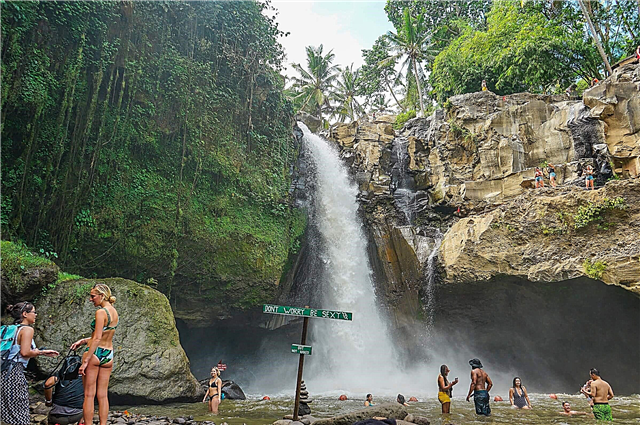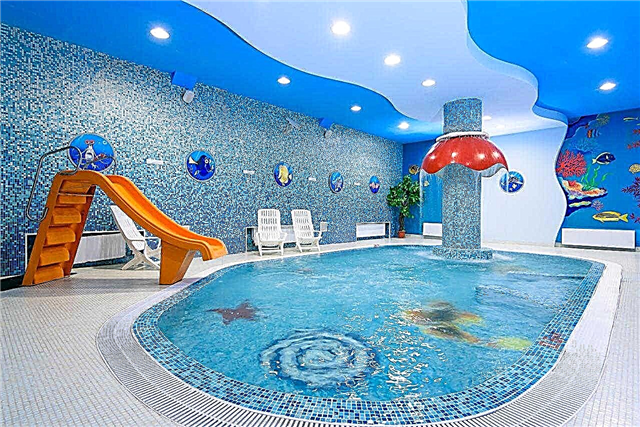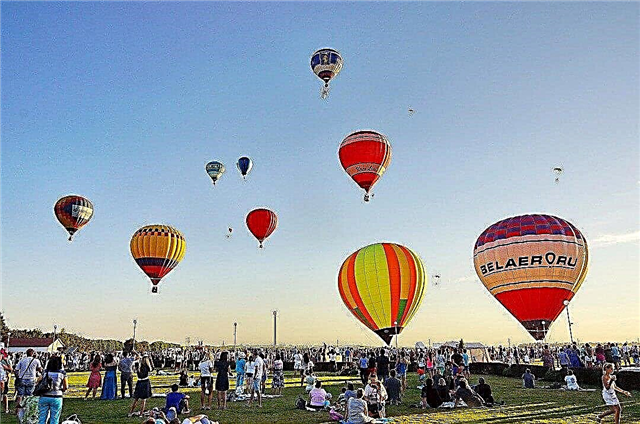The Belgorod region is hospitable and multifaceted. The endless steppes and meadows, rich fertile soils, an abundance of sun and a variety of flora and fauna delight the eye. Fans of ethnotourism will love visiting open-air museum complexes that recreate the traditional way of life and crafts of Russian peasants of the past centuries. And fans of industrial tourism will be curious to see the Lebedinsky quarry - the largest in the world for the extraction of iron ore.
The Belgorod region has a glorious military history, its most famous museums and monuments are dedicated to the legendary tank battle - the most significant during the Battle of Kursk. Also, the Belgorod land is famous for ancient Orthodox churches and monasteries, including underground ones, located in chalk caves.
The most interesting and beautiful places in the region
List, photos with names and descriptions of the best attractions in the region!
Museum-reserve "Prokhorovskoe field"
In 1943, a large-scale tank battle took place here, which played an important role in the victory of our army at the Kursk Bulge. At this place, a military museum has been opened, a monumental composition on the theme of the battle has been placed, a temple has been built, on the walls of which the names of the dead soldiers are carved. The symbol of the reserve is a white-stone belfry with a huge bell, three-fold strikes of which every hour remind of the exploits on three military fields: Kulikovo, Borodino, Prokhorovka.

Reserve Belogorie
One of the oldest reserves in Russia, its lands have a conservation history since 1640. It is famous for its old-growth oak forest, some trees are more than 300 years old. Many representatives of the protected flora are listed in the Red Book. The fauna of the reserve is diverse and unique. One of its attractions is a manor house on the territory of an ancient women's monastery, the buildings of which are perfectly preserved, including a monument made of Labrador, a volcanic mineral.

Museum-diorama “Battle of Kursk. Belgorod direction "
The main military museum was opened in 1987 and immediately became the most visited place in Belgorod. Its main exhibit is a huge art canvas showing a turning point in the course of the Battle of Kursk in 1943 - a tank battle near Prokhorovka. Canvas area - more than 1000 m2, painted over two years, it is the largest diorama in Europe. In other halls of the museum, personal belongings, awards, weapons, documents of the participants in the legendary battle are kept.

Kholkovsky monastery
The first mention of the underground monastery dates back to the beginning of the 17th century. The monks lived in caves carved into a chalk hill near the village of Kholki. The origin of the caves is still unknown - they were dug by the monks themselves or they appeared there earlier. The monastery existed for a hundred and fifty years, and then was overwhelmed. In the second half of the last century, it was decided to restore and restore the Kholkovsky caves. Now monks live there again, services are held in the underground church.

Barkov's mill
The six-story wooden mill building on the banks of the Oskol River in the village of Novoivanovka is the largest wooden structure in the entire Belgorod region. According to legend, the mill was won by merchant Barkov in a card game, transported from the old place and assembled on the river bank in 1914. Despite its age, after a major overhaul, the mill worked until 2004. Now production is stopped, you can get there as part of excursion groups.

Krapivenskoe settlement
The complex of archaeological sites on the banks of the Koren River near the village of Krapivnoye contains the remains of several ancient cultures. In the 5th century BC, the Scythians lived here, then the northerners came to replace them - one of the tribes that participated in the formation of Kievan Rus. Among the thousands of objects recovered from the earth on the territory of the settlement are weapons, intricate jewelry, sewing needles, scraps of ancient scrolls. All these exhibits are presented in the local museum of local lore.

Dmitrievskoe settlement
One of the most famous archaeological sites of the Belgorod region is located in the Shebekinsky region between the villages of Dmitrievka and Dobroe. The complex of structures includes the remains of a fortress, several settlements and a burial ground. Presumably, the first settlers here were the Scythians in the III-IV centuries BC, then the Alans and Bulgarians in the VIII-X centuries. During the excavations, single and collective burials, household items, dishes, weapons, jewelry were found.

Pansky oak
A unique natural attraction is located on the site between the villages of Yablochkovo and Dmitrievka in the Shebekinsky district. The age of the gigantic oak is 550 years. They say he saw Peter the Great himself at the time of his return from the Battle of Poltava. The height of the giant tree is 35 meters, the trunk girth is more than 5 meters. In the 19th century, one of the local landowners planted a magnificent orchard near an oak tree, which was later recognized as the best in Russia.

Bekaryukovsky Bor
A large location of perfectly preserved relict chalk pines is located near the village of Malomikhaylovka. Giant trees grow on steep chalk cliffs at an altitude of 70-100 meters above the valley of the Nezhegoli River. The name of the pine forest comes from the surname of the landowner Zakhar Bekaryukov, the former owner of valuable land, who conscientiously took care of their safety. Also here you can find other relict chalk plants.

Belgorod Museum of Folk Culture
The opening of the museum took place at the end of the last century, and it immediately became one of the most visited places in the city. Museum expositions give an idea of the origins and development of the culture of the region, folk traditions, rituals, and crafts. One of the main topics is history, peculiarities of life and customs of the Russian peasantry, as the main custodian of folk culture. The funds of the museum consist of 20,000 exhibits, including furniture, dishes, household items, national costumes and much more.

Cathedral Square of Belgorod
The main square of the city got its name in 2004. Here are the buildings of the regional administration, the hotel "Belgorod", the drama theater. Shchepkina, as well as a monument to the great actor. There is a memorial with the Eternal Flame at the entrance to the square. The center of the square is paved with multi-colored tiles in the form of an image of the sun, inside which there is a large metal circle with a map of the area. And along the perimeter there are 21 squares with the coats of arms of regional districts.

Palace complex of the Yusupovs in Rakitnoye
The Rakitnaya Sloboda belonged to the Yusupov princes for two centuries, and the construction of the two-story palace began in 1840 and lasted 6 years. It was designed by famous architects of that time, one of them - Giacomo Florenti, whose masterpieces adorn the streets of St. Petersburg. Also, from the time of the Yusupovs, three outbuildings, houses of a doctor and a priest, a zemstvo school and a hospital, houses for servants, a church and a park with a delightful cascade of ponds have been preserved.

House of the merchant Selivanov
A two-storey stone house with a mezzanine and a basement, decorated with rich stucco decoration - one of the oldest in Belgorod. It was built in 1872. Initially, the house and numerous buildings, such as a barn, a stable, sheds, outbuildings, belonged to the merchant Vasily Selivanov. Subsequently, it housed gymnasiums, a railway club, and various production departments. In 1999, a Literary Museum was opened in the house.

Schmarne cave
Not far from the village of Shmarnoe there is a complex of underground passages, halls with columns and small rooms carved into a chalk mountain.It is believed that this is an underground part of an ancient monastery, founded before the Tatar-Mongol invasion. But there is still no exact information about who and when dug the cave and lived in it. Niches are hollowed out in the walls, in some places with images of crosses, there is a hall like a church with a domed ceiling and an iconostasis.

Park Keys
On the site of the former manor house near the village of Kostroma, there is a picturesque Klyuchi park. Its main attraction is the springs gushing out of the ground. There is a baptismal font, a dressing area, and a small chapel. There is a zoo corner in the park, a beach for relaxation. A large area is occupied by the ethnographic complex Kostroma, consisting of original wooden huts. Each of the 7 farmsteads tells about their craft - needlework, blacksmithing.

Lebedinsky quarry
The largest iron ore basin on the planet. Located near the city of Gubkin. Due to its impressive size, 6 km long, 3.5 km wide and 600 meters deep, the quarry has already been entered into the Guinness Book of Records twice. There are 4 railway stations in the quarry and 36 special trains that transport the rock mass. And where there is no railroad track, the ore is transported by large dump trucks. On average, 38 million tons of ore are mined here annually.

Beam Kamenny Log
One of the most picturesque corners of nature is located in the Shebekinsky region in the basin of the Koren River. Many rare birds have found refuge on its territory, including the white-tailed eagle, the European woodpecker, and the European tyvik. Of the animals, weasels, hares, foxes, martens, deer live here. Several streams with clear water flow in the gully. They saturate with life-giving moisture about 400 species of local flora, 20 of which are on the verge of extinction.

Smolensk Cathedral in Belgorod
One of the oldest churches in Belgorod celebrated its three-century anniversary. Although its present appearance bears little resemblance to the original architectural version. The building of the cathedral was badly damaged in the 20th century. After the revolution, it was completely looted and given over to warehouses, during the Great Patriotic War it came under fire more than once, after the war they wanted to blow it up several times. But the temple survived, was restored and in the 90s of the last century services were resumed in it.

Transfiguration Cathedral in Belgorod
One of the most magnificent churches in the Belgorod land was erected in 1813 on the site of a dilapidated wooden church of the 17th century. During the Soviet era, the cathedral was inactive; since 1962, the regional museum of local lore was housed in its building. And only in the 90s the temple was repaired and returned to the church, services for the parishioners were resumed in it. A Sunday school, a library, a musical theater have been opened at the church, an Orthodox newspaper is being published.

Temple of the Holy Martyrs Faith, Hope, Love and their Mother Sophia
The construction of the magnificent structure with 17 domes was started in 2004, but after 5 years there was a terrible fire that destroyed most of the almost finished building. Most importantly, the crosses survived, and with the support of the parishioners, material and physical, the temple began its revival. In 2010, a three-tiered iconostasis was installed, a mountain place was equipped with stained-glass icons, an icon of the holy martyrs was installed, and a spiritual and educational center began its work.

Assumption-Nicholas Cathedral in Belgorod
According to the city chronicles, the construction of the temple began at the turn of the 17th-18th centuries, and a significant part of the funds for its construction was personally allocated by Peter the Great. The arrangement, interior and exterior decoration of the cathedral continued until the 19th century. Under Soviet rule, the temple was abandoned, the domes were dismantled, the bell tower was destroyed, the building was transferred to the bakery. And only in the late 90s the cathedral was returned to the churches and recognized as an architectural monument.

Belgorod Museum of History and Local Lore
One of the oldest museums in the region was established in 1924. Unfortunately, during the war years, all museum values were destroyed, and in the post-war period all the exhibits had to be reassembled. Now the funds number about 160,000 museum units that allow tracing the history of the region. Among them are rare documents and photographs, books, household items, valuable archaeological and ethnographic exhibits, fossil remains of animals and plants.

Belgorod Art Museum
Since 2007, the museum's expositions have been housed in a new three-story building, built in the Russian Art Nouveau style, with an extraordinary external appearance and a rich interior. The collection of the museum began with two hundred paintings by the local artist Dobronravov, taken as a gift from his widow. Now the funds contain numerous works of artists, sculptors, masters of applied art. Particular attention is paid to the Russian fine arts of the last century and our present.

Monument to Vladimir the Great in Belgorod
The majestic monument on Kharkiv Mountain, dedicated to Vladimir the Great, is a visiting card of Belgorod and the largest monument in the regional center. It is made of 1.5 tons of copper and has a height of over 22 meters. According to legend, it was Vladimir who founded the settlement, on the site of which the city was later erected, although confirmation of this has not yet been found. There is an observation deck near the monument, which offers a magnificent view of the entire city.

Monument to an honest traffic cop
In 2004, a monument to a traffic controller with a motorcycle was erected in Belgorod. The prototype for its creation was the traffic police inspector Pavel Grechikhin, who at one time was famous throughout the city for his incorruptibility and adherence to principles. He was a thunderstorm for all traffic violators, and any meeting with him turned into a fascinating story and was immediately passed on from mouth to mouth. In 1999, the brave policeman died, but even now, cast from copper, he continues to carry out his difficult service.

TV tower
The construction of the tallest structure in Belgorod has been going on for over 10 years and was completed in 2013. The city TV tower is about 220 meters high. A powerful transmitter is installed on it, which provides digital TV and radio broadcasting. There is a small observation deck at a height of 50 meters on the tower, but you can only get there by elevator if you have an appropriate permit. At night, decorative lighting with an original lighting design is switched on.

Sundial
The original sundial with a sharp gilded pointer was installed in the regional center in 2008 for the Day of its liberation. They are made of granite and bronze. The watch dial has a diameter of 11 meters. In clear weather, the clock can be used to find out the time with an accuracy of 10 minutes. And at night, an amazing picture of the starry sky lights up on the dial, where you can see the Milky Way and the most famous constellations of the Northern Hemisphere.

Korochanskiy gardens
The lands in the Korochansky district have long been famous for their apple orchards, but by the end of the last century the trees were abandoned. Local entrepreneur and enthusiast Viktor Gorodov decided to revive the Korochanskie gardens. On their territory, he organized an agricultural enterprise, the structure of which has 900 hectares of fruit plantations. The basis is made up of apple trees, but cherries, sweet cherries, cherry plums, strawberries and raspberries are also grown here. Not a single gram of chemistry is added to the ground, only organic fertilizers.

Center for Traditional Culture and Museum of Kupino Village
The cultural center, organized in Kupino by his native Nikolai Kuzulev, includes a museum, craft workshops and a traditional peasant farmstead of the century before last. The museum consists of 12 halls introducing the history and nature of the region, archaeological finds, events of the Great Patriotic War, ancient tools, folk toys for children.Famous crafts are presented in the workshops - embroidery, knitting, weaving and spinning, pottery, etc.

Belogorie firmament
This is the name of the famous international air festival, which has been held every summer in the Belgorod region since 2013. This is a magnificent and grandiose spectacle in its scale. A parade in the sky of balloons, virtuoso aerobatics of airplanes, gliders, deltaplanes, jumps of parachutists, concerts, holiday fireworks - and this is not the whole program of the festival. Events are held in the village of Dubovoye, at Prokhorov Field and in Belgorod.



